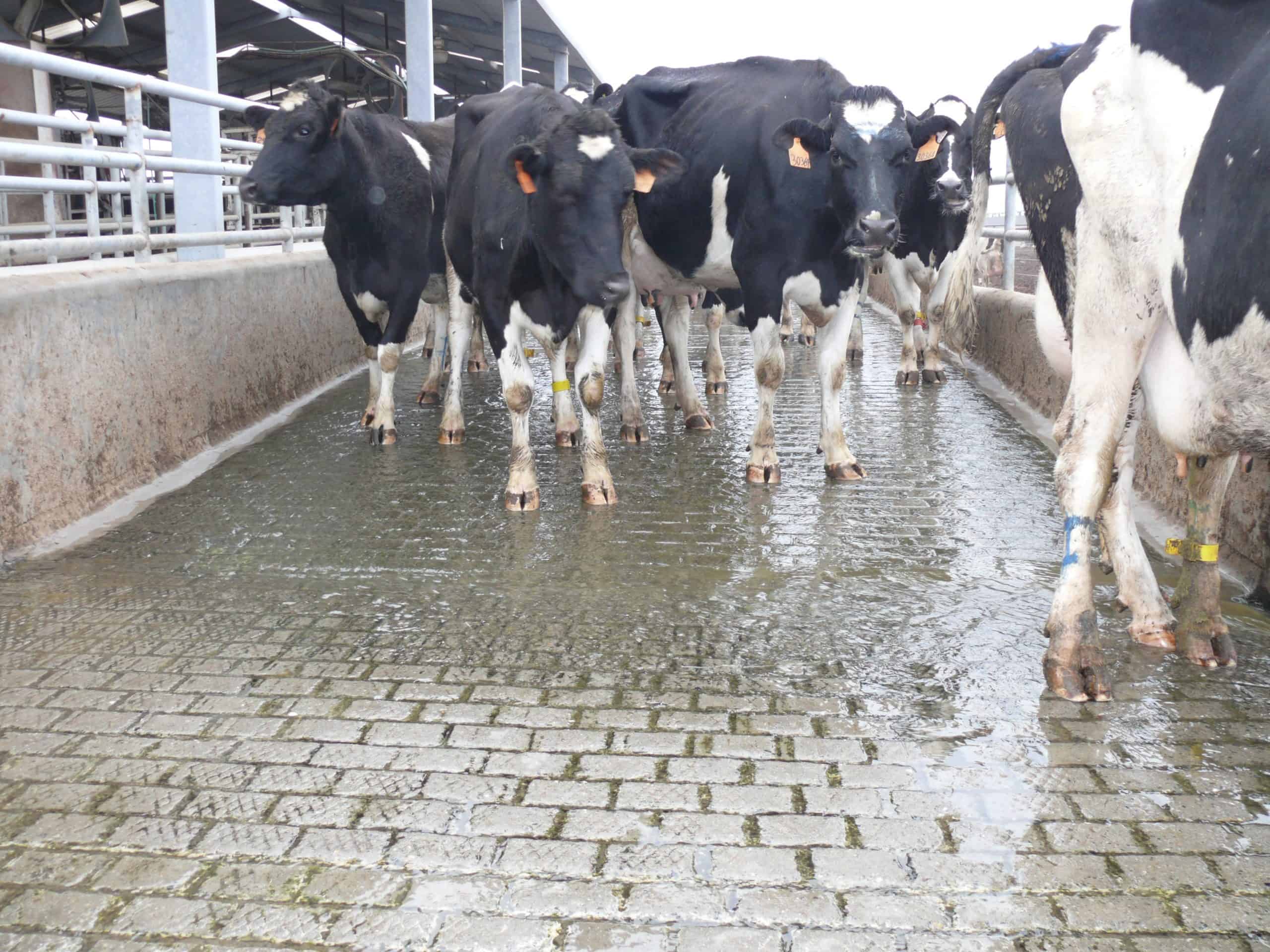
Formaldehyde has long had a place in dairy footbath programs. It’s an effective hoof hardener, a powerful disinfectant, and costs less than copper and zinc sulfate. But formaldehyde has some serious drawbacks. Here are the top 5 reasons – in reverse order — why dairy producers should rethink the use of formaldehyde in their footbath programs:
• Reason #5: Formaldehyde is painful (for cows). The direct application of formaldehyde to raw lesions is extremely painful and stressful for the cow, and can lead to avoidance of the bath.
• Reason #4: Formaldehyde is irritating (to humans). Formaldehyde fumes irritate the eyes, nose, mouth and throat. Prolonged exposure may cause severe allergic reactions or loss of smell. Dairy producers must ensure facilities are well ventilated during formaldehyde application.
• Reason #3: Formaldehyde is flammable. Extreme care must be taken when using formaldehyde around any sort of open flame, including cigarettes.
• Reason #2: Formaldehyde loses effectiveness in hot or cold weather. Formaldehyde begins losing efficacy at temperatures below 45 degrees Fahrenheit, and evaporates quickly in hot weather.
• Reason #1: Formaldehyde is a potential carcinogen. The Occupational Safety and Health Organization (OSHA) calls formaldehyde “a cancer hazard.” The European Chemicals Agency (ECHA) calls formaldehyde as “a known animal carcinogen” and “suspected mutagen.” As a result, some communities in the U.S. are now calling for restrictions on the use of formaldehyde on farms.
Fortunately, products like HealMax by AgroChem, Inc. provide an economic means of safely managing hoof problems without heavy metals, harsh acids or formaldehyde. They contain a unique blend of germicides that remain effective in either hot or cold weather, with visible results in about one week. HealMax Footbath Concentrate should be used at a 2% dilution rate, with 300 cow passes per 50 gallons of water. There’s also a HealMax spray for spot treatments, and a foam formulation for treating the entire herd during feeding.